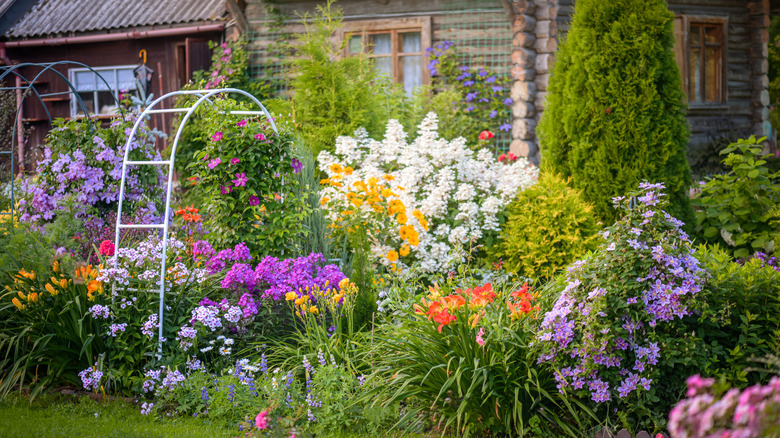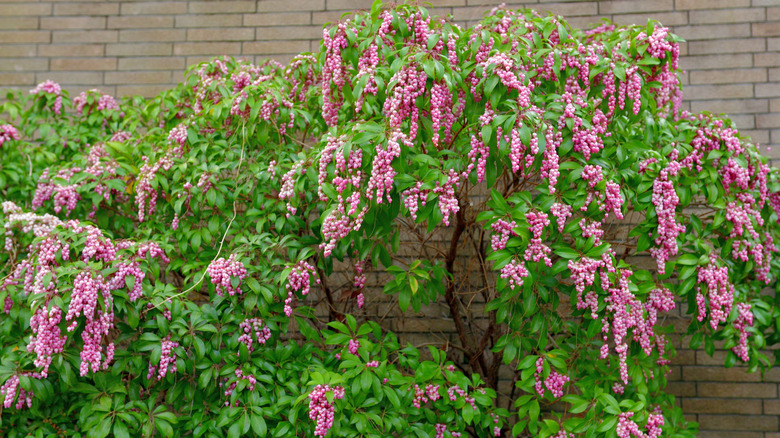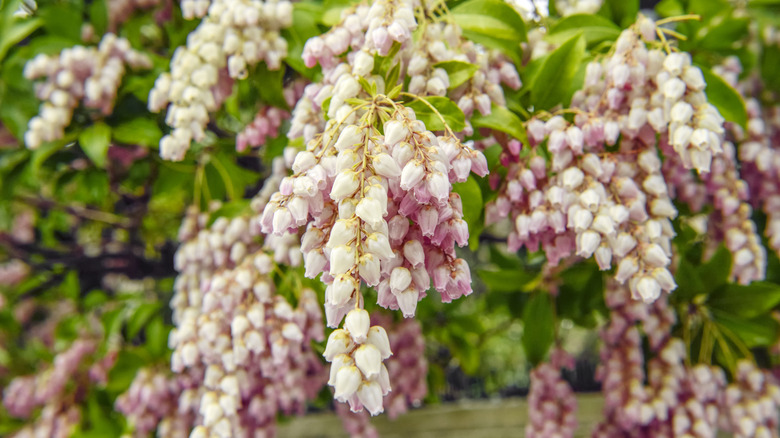Keep Your Garden Colorful Year-Round With A Flowering Shrub Pollinators Love
Want a garden that stays vibrant all year? A spot where bees and butterflies come to visit, even when other plants are still under the spell of winter? Making that happen might seem like a big job, but one shrub, in addition to this evergreen climber that also attracts pollinators, can bring lasting beauty to your yard. If you're hoping for an outdoor space that always looks great year-round and helps local pollinators, Japanese Andromeda (Pieris japonica) is just what you need.
Native to China, Japan, and Taiwan, this resilient shrub thrives in USDA growing zones 5 through 8, where it stays evergreen. The deer-resistant shrub is a garden gem, offering lots of visual appeal throughout the seasons. It has attractive glossy leaves that go through a color change as they mature. Known for its early spring blooms, it's an important pollen source when few other plants are flowering. Typically reaching a height of 8 to 10 feet and spreading to about 8 feet, Japanese Andromeda is a slow-growing plant that fits well into many garden designs without becoming too large too quickly.
Year-round beauty for your garden
As winter loosens its grip, Japanese Andromeda gets ready for its big moment, with graceful, drooping flower clusters appearing in early spring. These blooms can be white, pink, or deep rose, and their timing makes them a huge help for the very first pollinators waking up after the cold. Their light, sweet scent makes them an excellent choice for any outdoor space alongside other bushes with fragrant flowers. New, redish-bronze colored foliage appears around the same time as the Japanese Andromeda blooms; the leaves assume a dark green color as they mature.
This plant keeps your garden interesting even after its blooming period is over. Its flower buds form in late summer and fall, staying visible all through the colder months. Meanwhile, the spent blooms produce red seed pods, which also stay on the plant through fall and winter, and provide a strinking contrast against the dark-green leaves. This constant show of changing textures also keeps your garden appealing year-round.
Keeping your Japanese Andromeda happy
If you're looking for flowering shrubs to bring drama to your yard, Japanese Andromeda is a simple one to take care of. This shrub thrives in soil that drains well and is acidic, ideally with a pH between 5.0 and 6.5. Mixing in some organic material like compost or pine straw helps keep the soil at the right acidity and moisture levels. Japanese Andromeda prefers a spot with partial shade and needs protection from strong afternoon sun, which can burn its leaves. In cooler climates, it can handle more sun, even full morning sun, which can help it flower more.
It's good to water this shrub regularly, particularly during dry spells, to keep the soil consistently moist. That said, these plants really don't like excessively wet conditions, which can cause root problems. A layer of mulch around the base will help keep the soil moist and the roots cool. Pruning should be mostly limited to removing damaged branches in late winter. You can deadhead the spent blooms to encourage new growth and blooms next year, but doing so will also get rid of the pretty red seed pods. While Japanese Andromeda is generally tough, it's smart to check for pests like lace bugs. Catching them early can stop bigger issues from arising. Make sure to keep it away from children and pets and use caution when handling Japanese Andromeda, since all parts of it, including its flowers, leaves, and sap, are poisonous.


